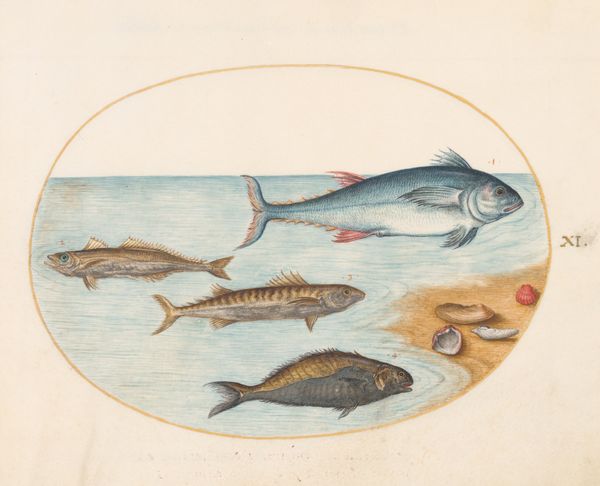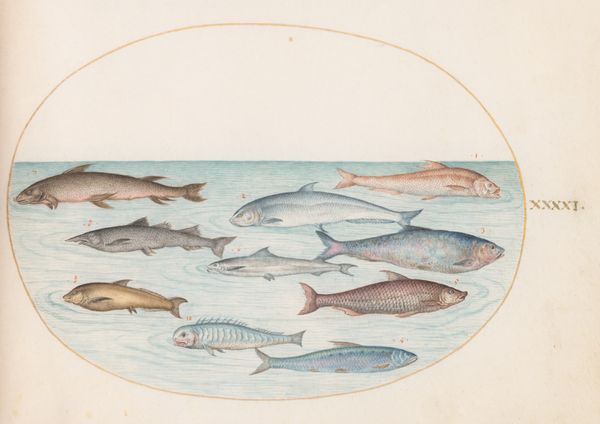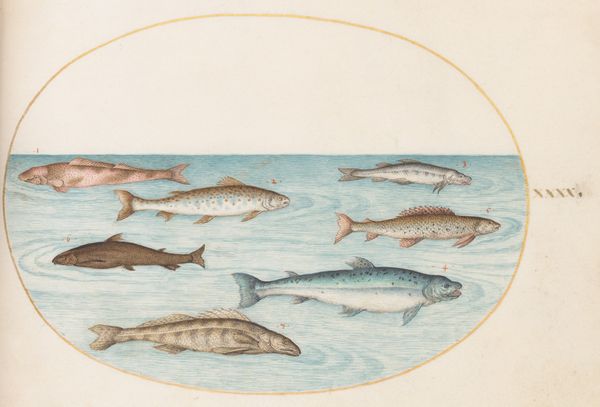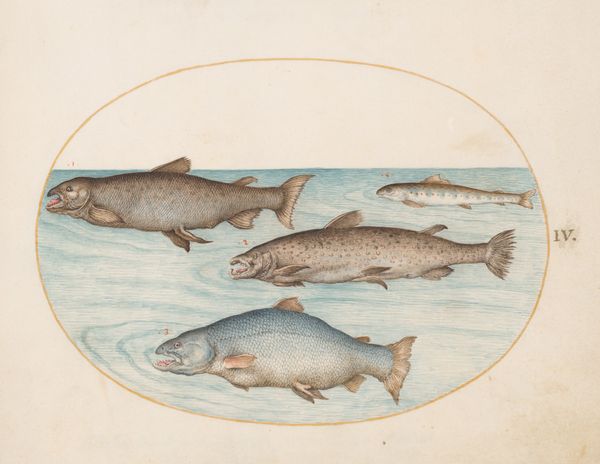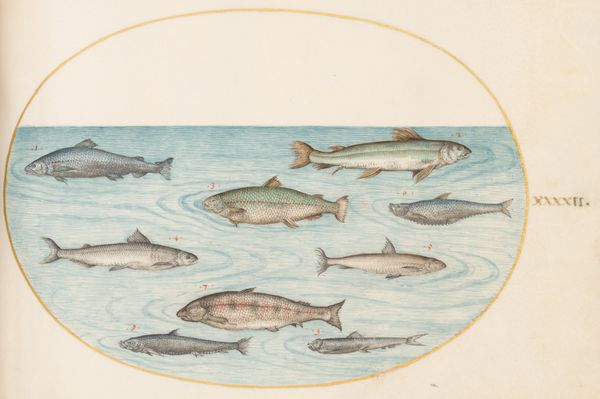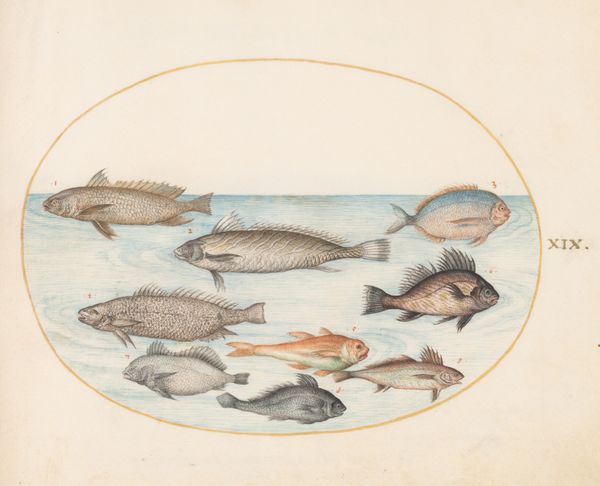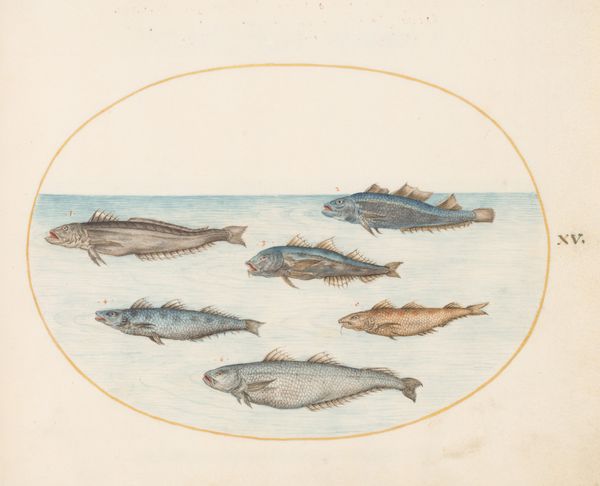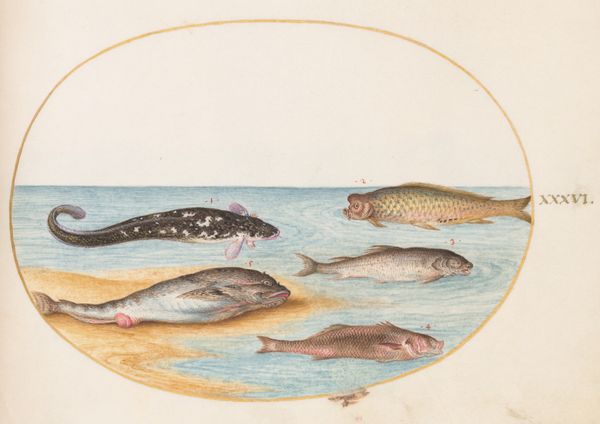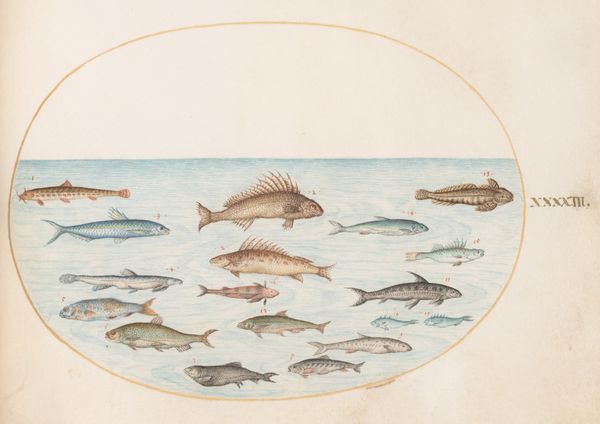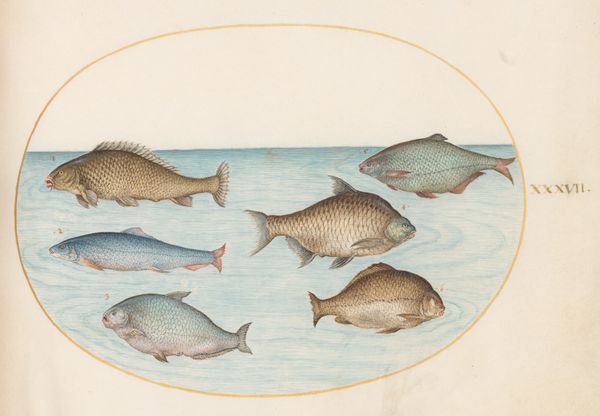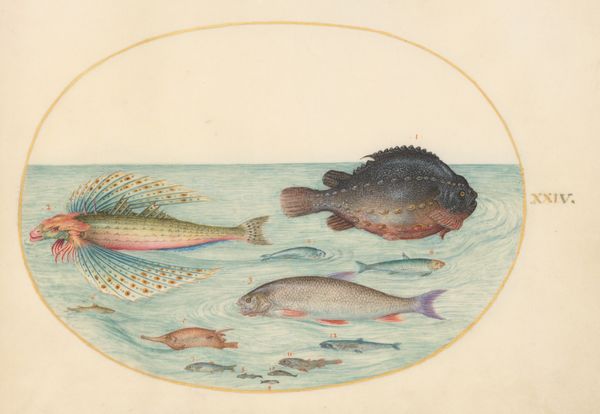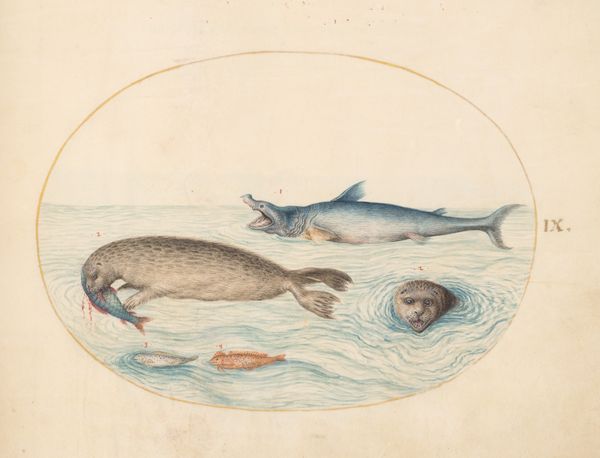
drawing, watercolor
#
drawing
#
11_renaissance
#
watercolor
#
pencil drawing
#
coloured pencil
#
watercolour illustration
#
academic-art
Dimensions: page size (approximate): 14.3 x 18.4 cm (5 5/8 x 7 1/4 in.)
Copyright: National Gallery of Art: CC0 1.0
Curator: This is Plate 6: Five Catfish and Sturgeon(?), a watercolor and drawing on vellum created by Joris Hoefnagel around 1575-1580. It's a captivating early study of aquatic life. Editor: Immediately, I'm struck by the strangeness. They’re somewhat comical, almost caricatures. The materiality of the watercolor and the precise draftsmanship seem at odds with the fantastical renderings of these fish. Curator: Exactly! Consider this: Hoefnagel was part of the court of Rudolf II in Prague, a hub for natural philosophy and collecting curiosities. These weren’t just pictures of fish; they were tools for understanding and cataloging the natural world, reflections of imperial ambition and the desire to dominate knowledge. Editor: So the commission of this and similar plates speaks to the social context in which the artist existed, and the values that propelled him and his benefactor to document wildlife. It is this dynamic and interplay of materials that gives it such presence. Tell me, how did the artist get these illustrations so right? Curator: Interestingly, accuracy wasn't always the primary goal. Think about the role of scientific illustration at the time, where established theories and symbolic representations often overshadowed direct observation. This isn't about pure objectivity; it's about how Hoefnagel interprets and presents these creatures through the lens of his time and place, likely incorporating descriptions or secondhand accounts into his detailed watercolor depictions. Editor: That resonates, particularly with the emphasis on certain textural details. He clearly pays close attention to the scales and fins; you can see the build up of material in each of the creatures depicted. What can it tell us about what tools he may have had available to complete such precise art? I can also observe these are not common fishes but from the sturgeon family. Curator: The '(?),' it must be remembered, acknowledges his understanding (or lack thereof) to classify the specimen; it's an appeal to fellow intellectuals. They might represent trade routes, culinary preferences, or even allegorical meanings within the court. These pieces highlight a relationship between art, knowledge, and power that's essential for understanding Hoefnagel's work. Editor: So beyond just naturalism, this is tied to cultural and historical power structures... and yet it makes one wonder about who labored to create the pigments, harvest the vellum. These fish represent the beginning of a modern view of nature, where there is a link between materiality, politics, and social relations. It feels utterly of its time, but prescient in our current ecological age. Curator: A compelling piece, offering us much to consider about the historical gaze, early natural science, and, indeed, the cultural implications surrounding our perception of the natural world. Editor: A lasting and important comment about nature's place as a mirror reflecting political power, even as captured in colored pigments on pages.
Comments
No comments
Be the first to comment and join the conversation on the ultimate creative platform.
